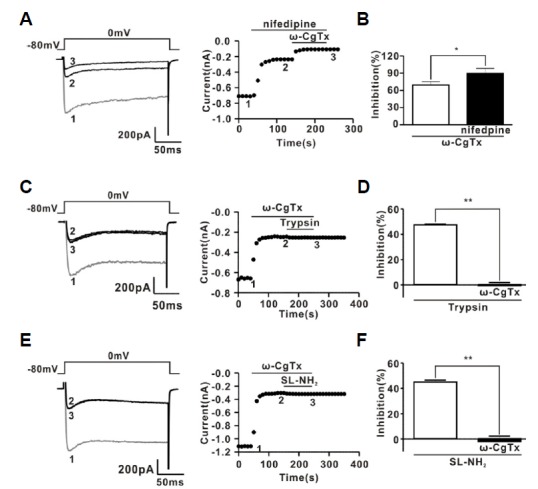Fig. 3.

Effect of ω-CgTx on ICa and PAR-2 agonist-induced ICa inhibition. (A) Left, a representative trace showing the effect of consecutive application of ω-CgTx (1 μM) and nifedipine (1 μM) on ICa. Right, time course of the effects induced by consecutive application of ω-CgTx (1 μM) and nifedipine (1 μM) on ICa. Trace 1, 2, and 3 in the left panel represent the traces recorded at the corresponding time indicated in the right panel, respectively. (B) Contribution of N-type (ω-CgTx-sensitive) and L-type (nifedipine-sensitive) currents to the total ICa. (C) Left, a representative trace of the effects induced by consecutive application of ω-CgTx (1 μM) and trypsin (30 nM) on ICa. Right, time course of effects induced by consecutive application of ω-CgTx (1 μM) and trypsin (30 nM) on ICa.Trace 1, 2, and 3 in the left panel represent the traces recorded at the corresponding time indicated in the right panel, respectively. (D) Summary of ICa inhibition by trypsin in the absence and presence of ω-CgTx. (E) Left, a representative trace of the effects induced by consecutive application of ω-CgTx (1 μM) and SL-NH2 (100 μM) on ICa. Right, time course of effects induced by consecutive application of ω-CgTx (1 μM) and SL-NH2 (100 μM) on ICa. Trace 1, 2, and 3 in the left panel represent the traces recorded at the corresponding time indicated in the right panel, respectively. (F) Summary of ICa inhibition by SL-NH2 in the absence and presence of ω-CgTx.
